If you experience a sewage leak, it can be unpleasant in multiple ways.
- There is the obvious – the fact that sewage is leaking means that there is likely foul-looking and smelling fluid where it shouldn’t be. This is even more so the case if the sewage leak is in your home – after all, the whole point of the sewer system is to take sewage away from your home.
- The toxicity of the sewage: sewage contains a large number of dangerous biohazards, which will mean that even a small leak can cause extensive damage to property, furniture, and fittings. For anything but the smallest leak, you’ll likely need to call in professionals to ensure that the cleanup goes as well as possible and that your home is sanitized and deodorized.
- The financial cost. Because of the damage sewage can do, and the requirement to use professionals to help with the cleanup, costs can very quickly add up. Furthermore, there aren’t a lot of ways that you can cut corners, since you need to make sure that the cleanup is done in a thorough and professional way.
For information on what to do if sewage leaks into your home, see our page Sewage Backup in Basement – What to Do.
There are two main costs involved:
The cost of fixing whatever caused the leak in the first place.
The restoration cost.
Both of these costs can add up and can very quickly get into the thousands of dollars, making the financial element truly unpleasant.
Despite how overwhelming it may all sound, there are options available if you do experience a sewage leak. This guide is designed to walk you through those options and show how it’s possible – in some instances – to save money. By far the best of these, however, is prevention; it’s far cheaper to spend a small amount of money in the short term to prevent a sewage leak than it ever will be to repair and clean up after a leak.
This guide will show you how and why this is the case, as well as steps you can take post-leak to mitigate any expenses. Hopefully, when you see the potential price tag, you will take the steps to be proactive about maintaining your sewer lines. The cheapest option is not to have any sewage leaks in the first place. That’s also by far the most pleasant option.
OVERALL COST OF SEWAGE CLEANUP
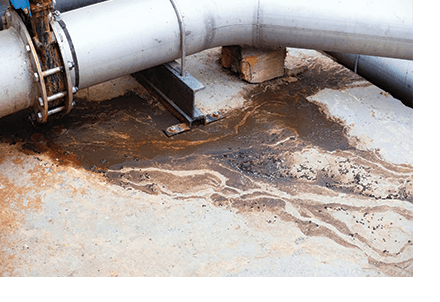
THE OVERALL COST
On average, you can expect to pay somewhere between $2,000 and $10,000 if you experience a sewage leak. In some extreme situations, the costs can rise to as much as $50,000. As a rule of thumb guide, you can expect to pay around $7.00 per square foot of sewage leak.
The key determinants of the cost are where the sewage has leaked and how much sewage has leaked.
The two key costs you’ll need to factor in are the costs of repair and the costs of cleanup.
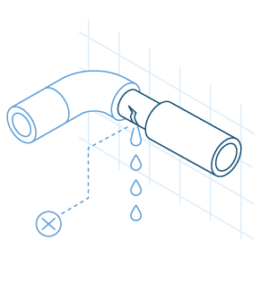
REPAIR COSTS
Your most immediate priority when experiencing a sewage leak will be to repair the damage caused and stop the leak. This will inevitably involve a call to a plumber. For this, you’ll likely pay somewhere between $59 and $79 per hour. If you need a plumber after hours or during a holiday, these prices may be even higher.
Some plumbers may charge a project-based fee in case of an emergency call out. In this case, you’ll likely pay a price of somewhere between $250 and $400. If the cause of the leak is a broken pipe, you’ll have to pay a materials fee of around $150.

CLEANUP COSTS
Once you’ve stopped the leak, your attention will turn to the costs of cleanup. This is where things can really start to add up. The big problem with sewage leaks is that you need to clean up, but also to sanitize and deodorize the space.
The use of a chemical cleaner will cost you between $20 and $100, depending on the size of the space. If you need to use a Wet Vac (and you most likely will) it will cost you around $50. Similarly, a drain rooter, which is designed to help your drain flow freely again, will cost somewhere between $55 and $175.
While these costs are relatively minor and generally unavoidable, there are certain larger costs that you will almost certainly incur. The extent of the costs depends hugely on the amount of damage caused, as well as the complexity of your sewer system. For example, if you need your pipes fully cleaned out, then it will cost somewhere between $650 and $2,000. In some circumstances (i.e. if it is damaged beyond repair) you may need to fully replace your entire septic tank. This will cost somewhere around $5,000.
ADDITIONAL COSTS
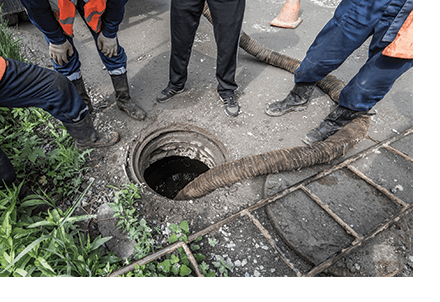
As mentioned throughout, there are a number of additional costs you may be faced with depending on how your sewer system is designed, the extent of the damage, and potentially even your appetite for further repair. Generally, the most important costs are those that prevent future damage. These are the costs that will actually save you money in the long run.
In addition, some of these costs involve a professional taking a look at your sewer system to anticipate future problems. Again, these are well worth the long-term investment.
Septic Tank Pumping
Septic tank pumping involves removing all material from the outside of a septic tank. If you have a leak in your septic tank, material from outside may have leaked in, which can lead to future blockages.
Septic tank pumping cost is usually between $295 and $610.
Snaking or Rodding
Snaking or rodding is a technique to remove all blockages from the inside of a sewer pipe. This will help to prevent blockages. Even if the original leak wasn’t caused by a blockage, it should be a regular part of the maintenance of your home, as it makes future leaks less likely.
For this, you’ll likely pay somewhere between $100 and $250.
Trenchless Pipe Repair
If you need to repair a pipe, you can do so more easily with a trenchless pipe repair. This removes the need to dig up the yard and is a faster process.
This will cost somewhere around $160 per foot.
Tree Root Removal
Tree roots are one of the most common sources of sewage leaks. They can be tricky to remove.
It will generally cost you somewhere between $100 and $600 for a professional to do so.
Clogged Drain Repair
If the drains are clogged to a degree not fixable by rodding or snaking, you may need a may invasive process. A professional will be able to help with this.
It will cost you around $200.
Sewer Scope Inspection
Long-term, you should invest in a regular inspection of your sewage pipes using a scope. This will identify problems before they lead to major leaks.
This will cost between $250 and $500 and should be repeated every three to five years.
This guide has shown that sewage cleanup is an expensive business and, therefore, the best option is to spend the money to prevent it from happening in the first place. Money spent on sewage line maintenance is perhaps not always the most attractive way to spend hundreds or thousands of dollars.
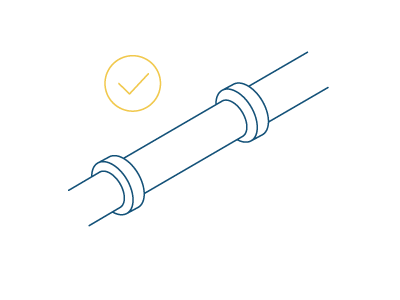
However, from a cost-benefit perspective, it is far better than spending two or three times the amount to clean up a leak that could have been prevented in the first place. So think of it as an investment – it’s better to spend a little amount of money to avoid spending a large amount of money.
From a financial perspective, there’s very little room for maneuver when it comes to the final cost. However, aside from taking the steps to keep your sewer system maintained, there are a few other things you can do.
Firstly, you should undertake a regular inspection of your entire home.
Generally, aim to do this once every six months. Check all of the fixtures and fittings to ensure that there is no wear and tear that could lead to damage. With regards to the sewer system, you should make sure that your backflow preventer and your sump pump are working well. You should also act as fast as possible if you notice something unusual is happening to your plumbing. Time is of the essence when it comes to plumbing problems.

A sewage leak can be a really damaging financial experience, costing as high as $50,000. Of course, the true upper limit can be far higher depending on factors such as how long the leak continues before it is discovered, as well as the value of the property that it destroys. However, you’d need to be extremely unlucky for damage to exceed that $50,000 limit.
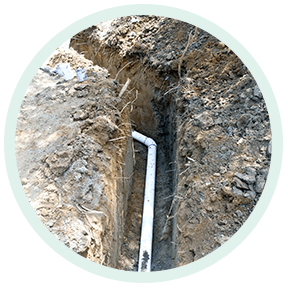
This truly shows the value of spending the money in the short term to prevent leaks and allows you to quantify the costs involved in doing so.
In general, however, this represents a worst-case scenario; most damage falls somewhere between $2,000 and $10,000.
Hopefully, the shock at the prospect of a bill in the thousands motivates you to act, even if the worst never happens.
